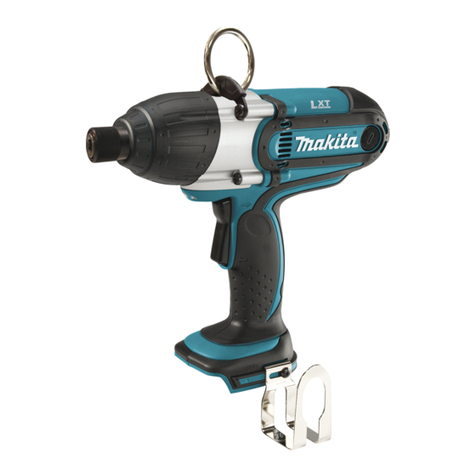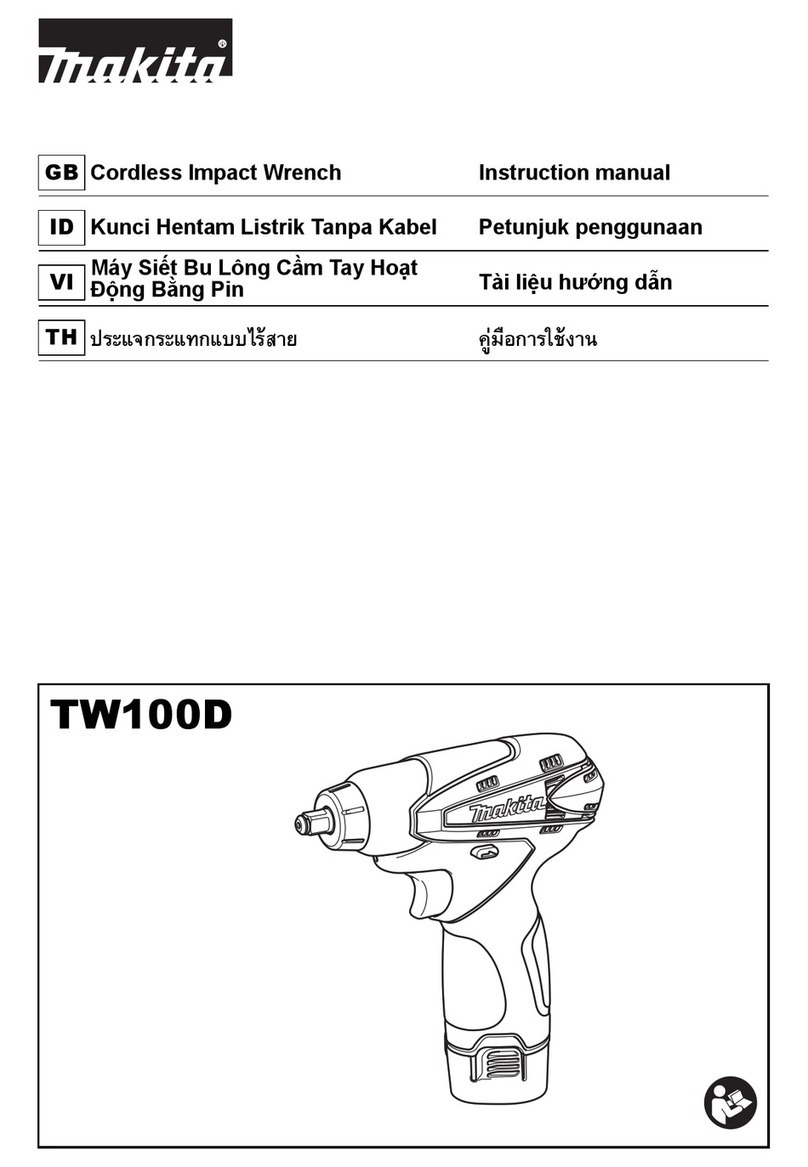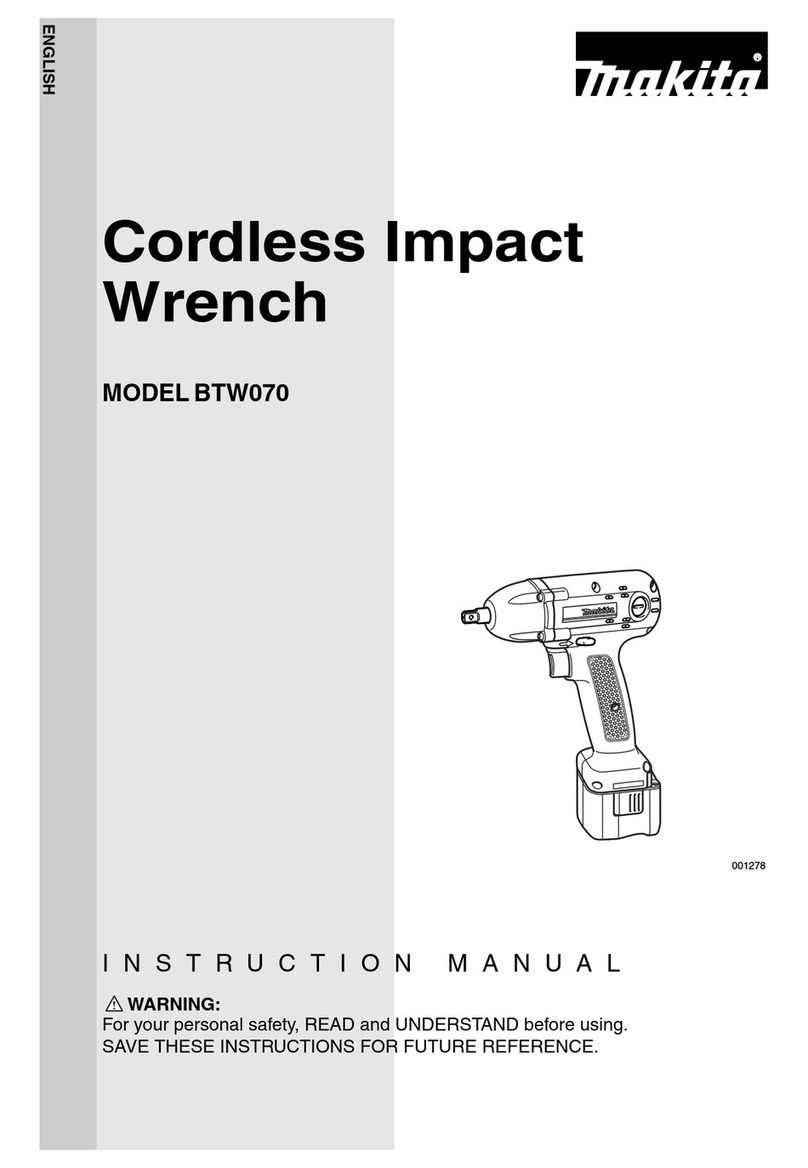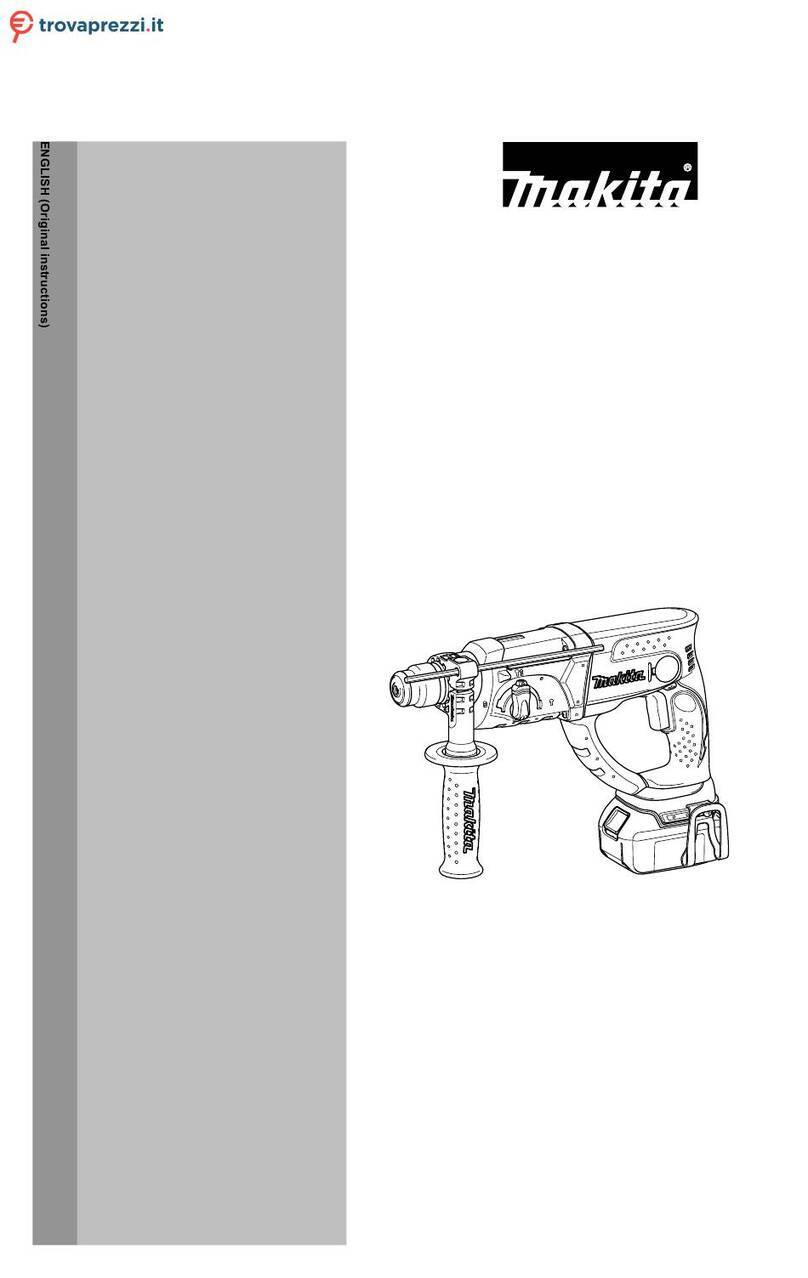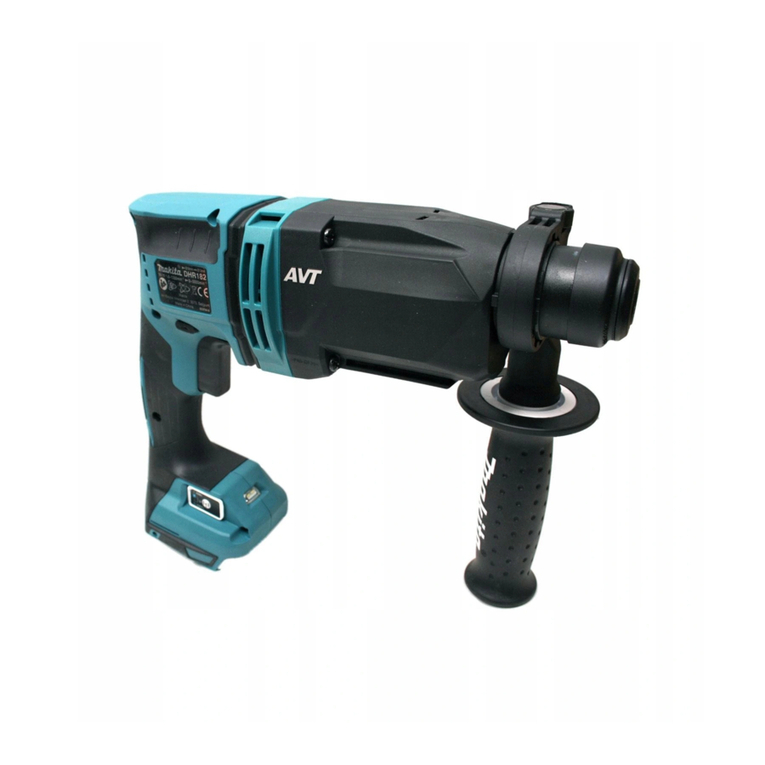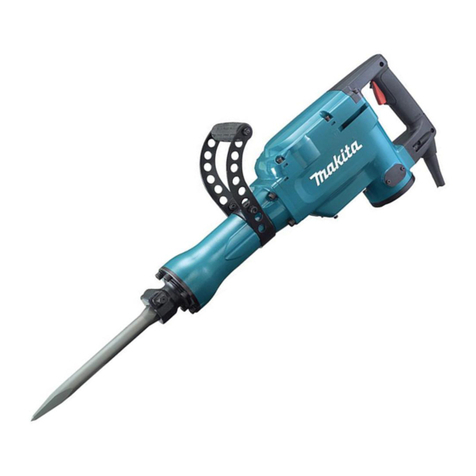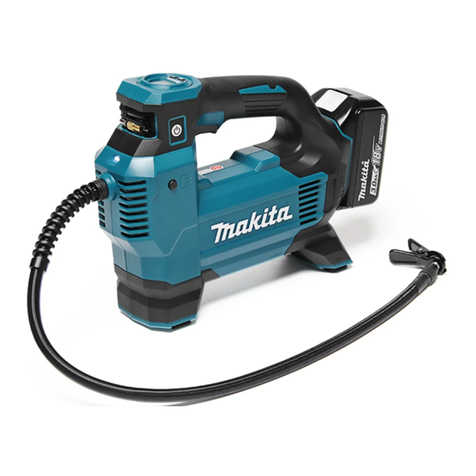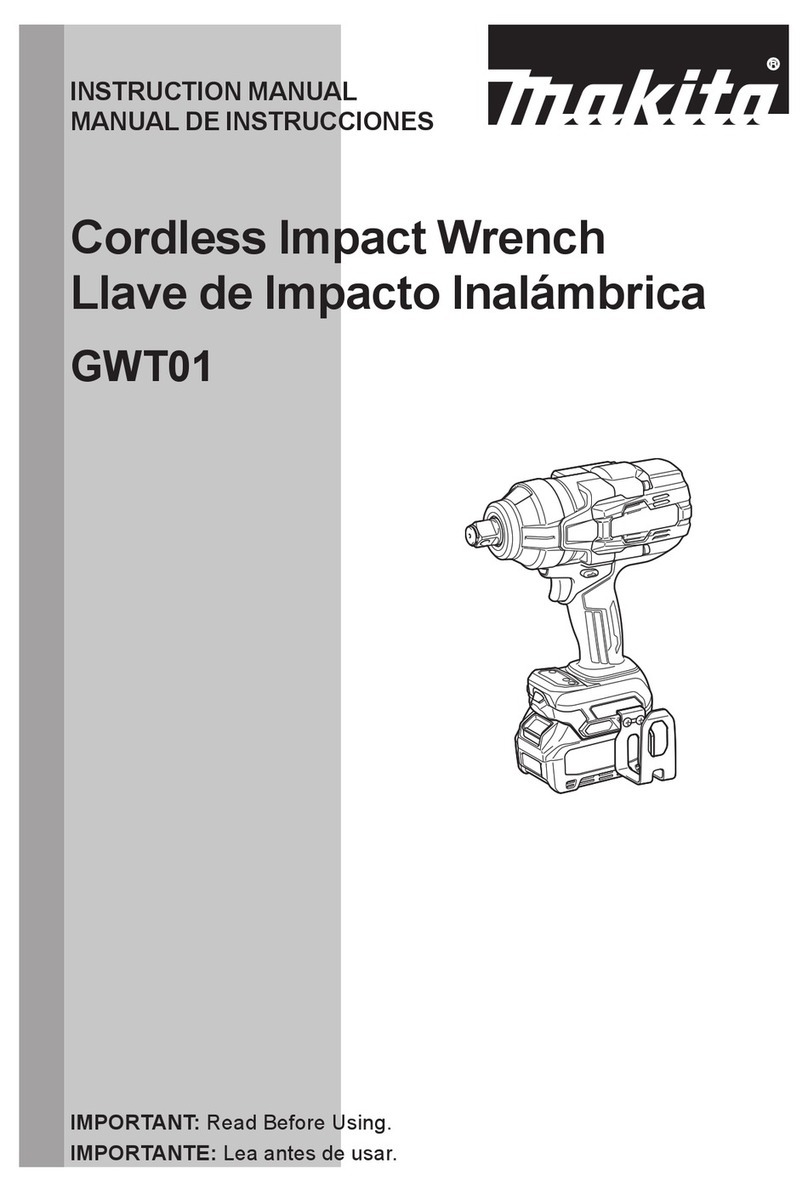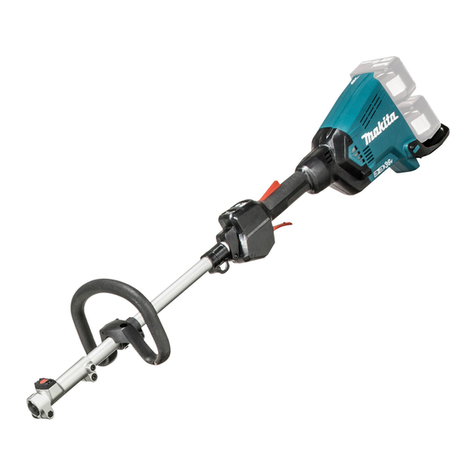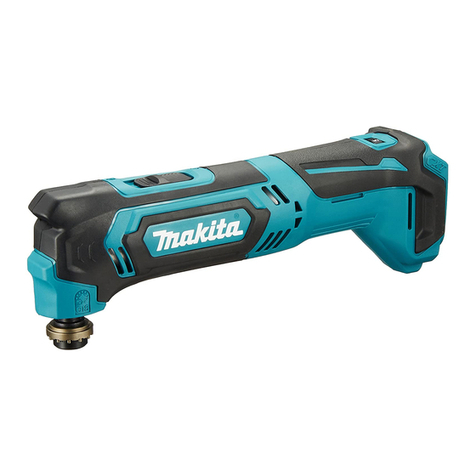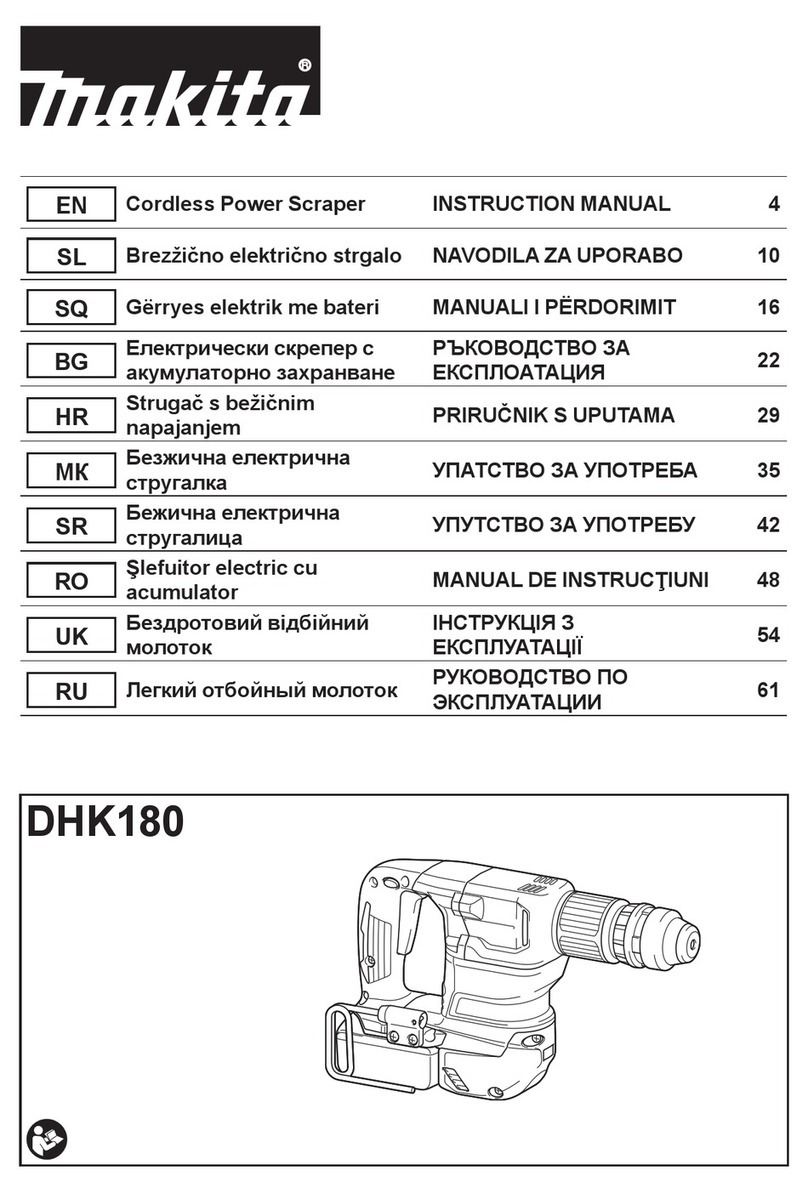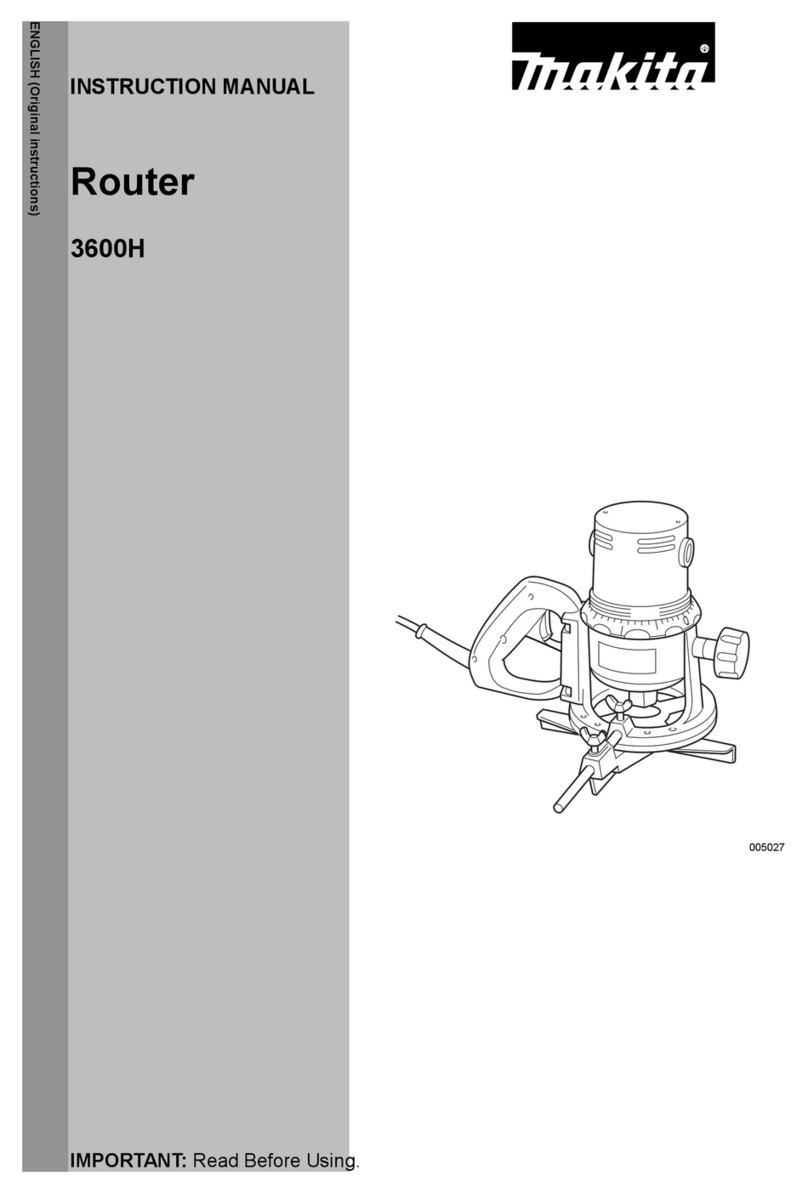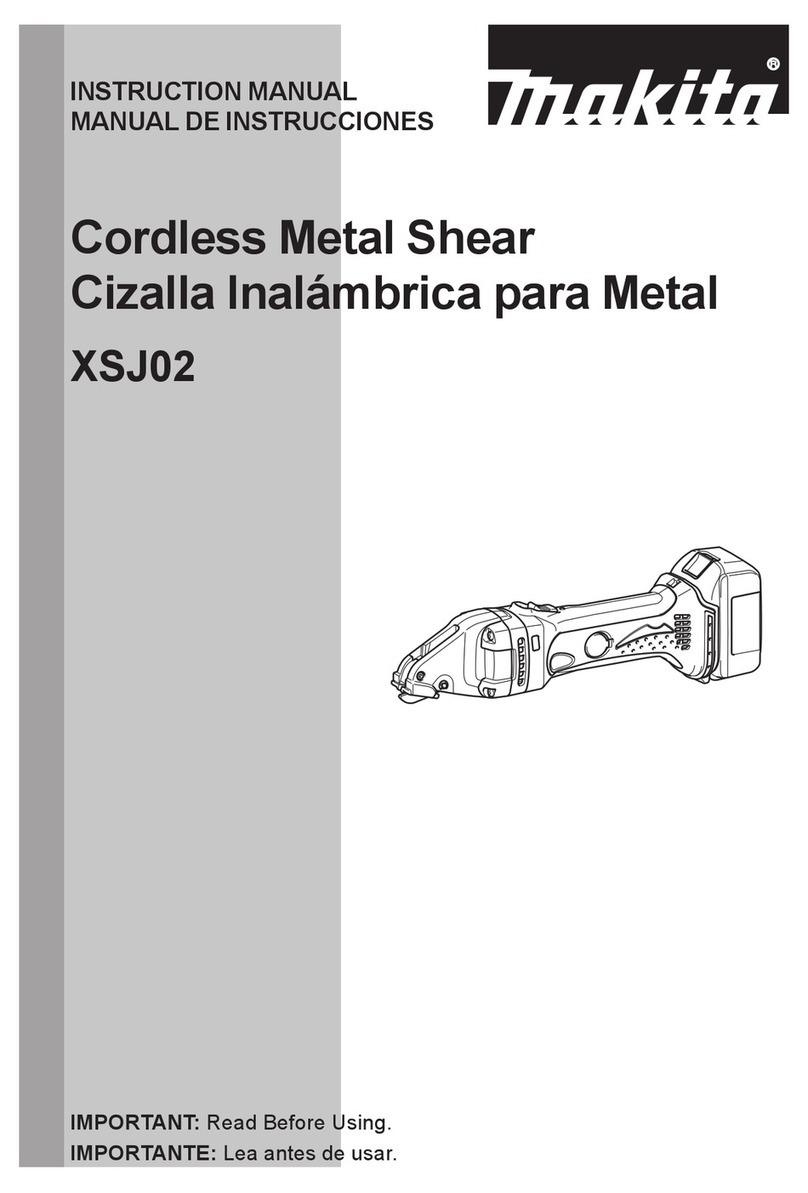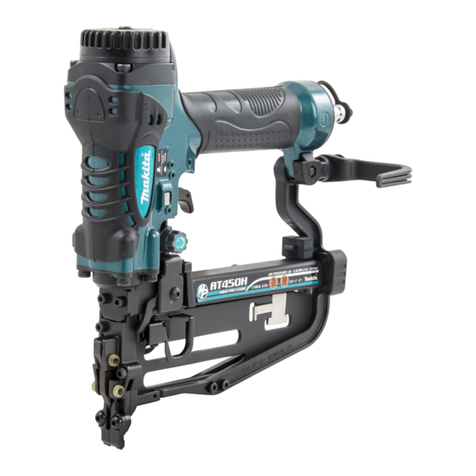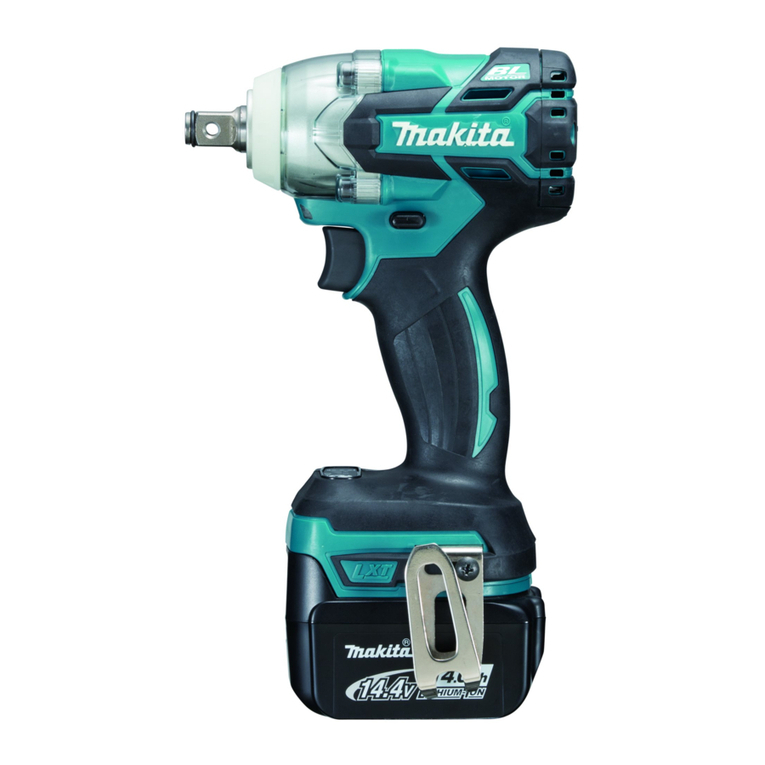
10 ENGLISH
Vibration
The vibration total value (tri-axial vector sum) deter-
mined according to EN62841-2-17:
Model RP1802
Work mode: cutting grooves in MDF
Vibration emission (ah) : 5.1 m/s2
Uncertainty (K) : 1.5 m/s2
Model RP1802F
Work mode: cutting grooves in MDF
Vibration emission (ah) : 5.1 m/s2
Uncertainty (K) : 1.5 m/s2
Model RP1803
Work mode: cutting grooves in MDF
Vibration emission (ah) : 5.1 m/s2
Uncertainty (K) : 1.5 m/s2
Model RP1803F
Work mode: cutting grooves in MDF
Vibration emission (ah) : 5.1 m/s2
Uncertainty (K) : 1.5 m/s2
Model RP2302FC
Work mode: cutting grooves in MDF
Vibration emission (ah) : 4.2 m/s2
Uncertainty (K) : 1.5 m/s2
Model RP2303FC
Work mode: cutting grooves in MDF
Vibration emission (ah) : 4.2 m/s2
Uncertainty (K) : 1.5 m/s2
NOTE: The declared vibration total value(s) has been
measured in accordance with a standard test method
and may be used for comparing one tool with another.
NOTE: The declared vibration total value(s) may also
be used in a preliminary assessment of exposure.
WARNING:
The vibration emission during actual
-
ue(s) depending on the ways in which the tool is used
especially what kind of workpiece is processed.
WARNING:
Be sure to identify safety measures
to protect the operator that are based on an estima-
tion of exposure in the actual conditions of use (tak-
ing account of all parts of the operating cycle such
it is running idle in addition to the trigger time).
EC Declaration of Conformity
For European countries only
The EC declaration of conformity is included as Annex A
to this instruction manual.
SAFETY WARNINGS
General power tool safety warnings
WARNING: Read all safety warnings, instruc-
with this power tool. Failure to follow all instructions
serious injury.
Save all warnings and instruc-
tions for future reference.
The term "power tool" in the warnings refers to your
mains-operated (corded) power tool or battery-operated
(cordless) power tool.
Router safety warnings
1. Hold the power tool by insulated gripping
surfaces only, because the cutter may contact
its own cord. Cutting a "live" wire may make
exposed metal parts of the power tool "live" and
could give the operator an electric shock.
2.
Use clamps or another practical way to secure
and support the workpiece to a stable platform.
Holding the work by your hand or against the body
leaves it unstable and may lead to loss of control.
3. The cutter bit shank must match the designed
collet chuck.
4. Only use a bit that is rated at least equal to the
maximum speed marked on the tool.
5. Wear hearing protection during extended
period of operation.
6. Handle the router bits very carefully.
7. Check the router bit carefully for cracks or
damage before operation. Replace cracked or
damaged bit immediately.
8. Avoid cutting nails. Inspect for and remove all
nails from the workpiece before operation.
9.
10. Keep hands away from rotating parts.
11. Make sure the router bit is not contacting the
workpiece before the switch is turned on.
12. Before using the tool on an actual workpiece,
let it run for a while. Watch for vibration or
wobbling that could indicate improperly
installed bit.
13. Be careful of the router bit rotating direction
and the feed direction.
14. Do not leave the tool running. Operate the tool
only when hand-held.
15.
come to a complete stop before removing the
tool from workpiece.
16. Do not touch the router bit immediately after
operation; it may be extremely hot and could
burn your skin.
17. Do not smear the tool base carelessly with
thinner, gasoline, oil or the like. They may
cause cracks in the tool base.
18.
Some material contains chemicals which may be
toxic. Take caution to prevent dust inhalation and
skin contact. Follow material supplier safety data.
19. Always use the correct dust mask/respirator
for the material and application you are work-
ing with.
20. Place the tool on stable area. Otherwise falling
accident may occur and cause an injury.
21. Keep cord away from your foot or any objects.
Otherwise an entangled cord may cause a falling
accident and result in personal injury.
SAVE THESE INSTRUCTIONS.
